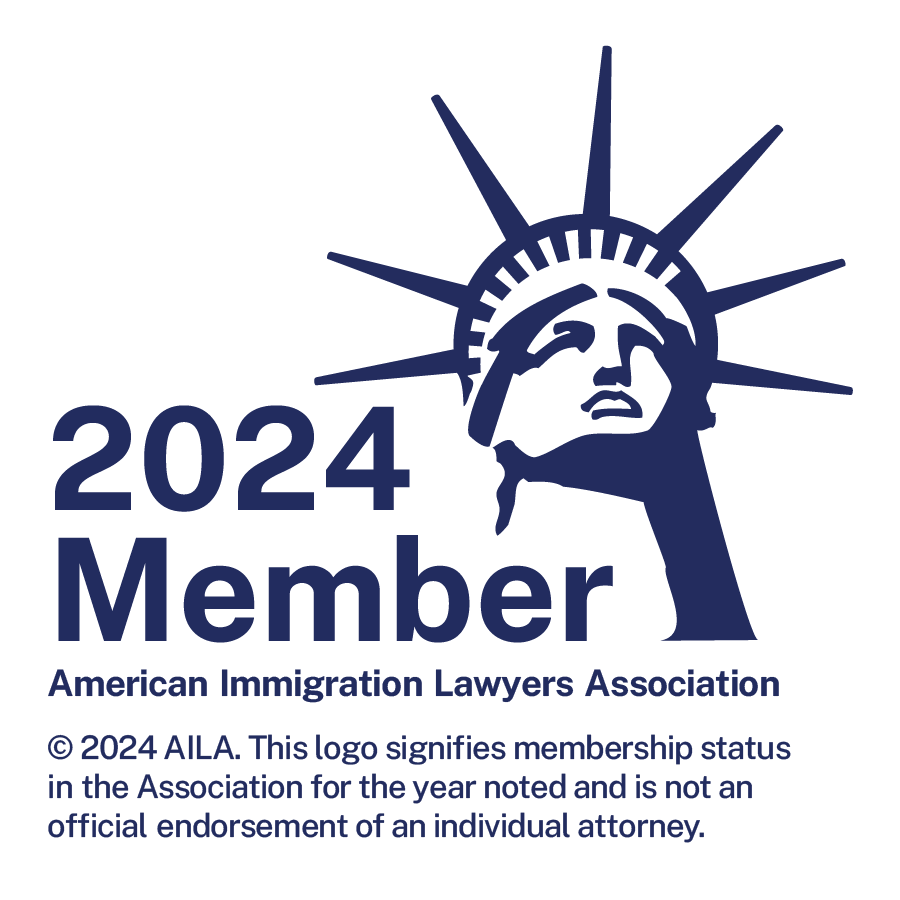K-1 or Fiancé(e) Visa
What are the eligibility requirements for a K-1 Visa?

To qualify for a K1 visa, both the petitioner (the U.S. citizen) and the beneficiary (the foreign fiancé(e)) must meet certain criteria:
The petitioner must be a U.S. citizen.
Both parties must genuinely intend to marry within 90 days of the beneficiary’s arrival in the U.S.
The couple must have met in person at least once within the two years prior to filing the petition, with some limited exceptions for cases involving extreme hardship or cultural traditions.
Both parties must be legally eligible to marry according to the laws of the state where the marriage will take place.
Neither party should have any legal barriers to marriage, such as being married to someone else or having certain criminal convictions.
The foreign-citizen fiancé(e) and U.S. citizen sponsor must have met in person within the past two years. USCIS may grant an exception to this requirement, based on extreme hardship for the U.S. citizen sponsor to personally meet the foreign-citizen fiancé(e), or, for example, if it is contrary in the U.S. citizen sponsor’s or foreign-citizen fiancé(e)’s culture for a man and woman to meet before marriage.
What are the steps involved in the K-1 Visa process?
The first step in this process is for a US citizen sponsor to file a petition with the USCIS for a K-1 Visa for the beneficiary. Once the K-1 petition is approved, it is sent to the National Visa Center (NVC). The NVC will give you a case number and send your petition to the U.S. Embassy or Consulate where your fiancé(e) lives.
The second step involves the beneficiary applying for a K-1 visa at the U.S. Embassy or Consulate where he/she lives. Eligible children of K-1 visa applicants may apply for K-2 visas. Before the issuance of an immigrant or K visa, every applicant, regardless of age, must undergo a medical examination which must be performed by an authorized panel physician.
If the beneficiary receives a K1 visa, the beneficiary can travel to the U.S. Once in the U.S., the couple must marry within 90 days.
After getting married, the beneficiary can apply for lawful permanent resident status (Green Card) by filing Form I-485, Application to Register Permanent Residence or Adjust Status, with USCIS.
USCIS scrutinizes evidence of the relationship to ensure its legitimacy. Providing documentation demonstrating the authenticity of their relationship is important. The couple may face certain issues, such as past immigration violations or criminal history, which could render the beneficiary inadmissible to the U.S. In such cases, a waiver or other remedies may be available.
Family-based immigration, also known as family reunification or family-sponsored immigration, refers to the process by which individuals can immigrate to another country based on their family relationships with citizens or permanent residents of that country. In the context of the United States, family-based immigration allows U.S. citizens and lawful permanent residents (green card holders) to sponsor certain family members for immigration to the U.S.
There are two main categories of family-based immigration in the United States:
Immediate Relatives: These include spouses of U.S. citizens, unmarried children under the age of 21 of U.S. citizens, and parents of U.S. citizens who are 21 years of age or older. Immediate relatives are given the highest priority in the immigration process and are not subject to numerical limitations.
Family Preference Categories: These include other, more distant, family relationships with U.S. citizens or permanent residents. These categories include:
- First Preference (F1): Unmarried sons and daughters of U.S. citizens.
- Second Preference (F2):
F2A: Spouses and unmarried children (under 21 years old) of lawful permanent residents.
F2B: Unmarried sons and daughters (21 years or older) of lawful permanent residents.
- Third Preference (F3): Married sons and daughters of U.S. citizens.
- Fourth Preference (F4): Siblings of adult U.S. citizens.
The process of sponsoring a family member for immigration typically involves the U.S. citizen or lawful permanent resident filing a petition with U.S. Citizenship and Immigration Services (USCIS) on behalf of the relative. Once the petition is approved, the family member may apply for an immigrant visa if they are outside the U.S., or for adjustment of status if they are already in the U.S.
For marriage-based immigration, where a U.S. citizen is marrying a foreign national, the process typically involves filing a Form I-130 (Petition for Alien Relative) followed by adjustment of status or consular processing based on the approval of the petition.
It’s important to note that immigration laws and procedures can be complex and are subject to change. Individuals considering family-based immigration are encouraged to seek guidance from qualified immigration attorneys or accredited representatives.
Practice areas
We offer consultations, representation, assistance and advice in the following areas:
- Employment-Based Immigration (EB-1, EB-2, EB-3, EB-4)
- Investment-Based Immigration (E-1, E-2- EB-5 Immigrant Investor Program)
- Family-Based Immigration (Immigration Petitions to Immediate Relatives/Marriage based Green Cards)
- K-1 Fiancé(e) Visa
- K-3 Visa for Spouse
- US Green Card (Permanent Residence)- Adjustment of Status/Consular Processing
- Replacement of Green Card/Renewal of Green Card
- Permanent Labor Certification (PERM)
- Change of Status and Extension of Status
- TN NAFTA Professionals (Canada/Mexico)
- Visas for Temporary Visitors
- B-1 Temporary Business Visitor Visa
- B-2 Visa (Visiting family and friends, tourism and vacation, medical treatment, transiting the US)
- Crew Visas(C-1/D)
- Deferred Action for Childhood Arrivals (DACA)
- Temporary Non-Immigrant Work Visas (H-1B, L-1A, L-1B, O-1, R-1, P-1A, P-1B, P-2, P-3, Q, H-1C, H-2A, H-2B,H-3, I, E-1, E-2, E-3)
- Form I-9 Compliance
- H-1B Specialty Occupation: H-1B Cap, H-1B Extensions, H-1B Transfers, H-1B Amendments, Cap Exempt H-1B, H-1B for Fashion Models
- H-1B1 Visa for Chileans/Singaporeans
- Registration to H-1B Cap
- Responding to H-1B RFEs
- L-1A Intracompany Transferee
- L-1A New Office
- Hague Adoption Certificate or Custody Declaration
- L-1B Specialized Knowledge
- R-1 Religious worker
- O-1 Extraordinary Ability or Achievements in Sciences, Education, Business, Athletics/Sports and Arts
- EB-1 Extraordinary Ability, Outstanding Professors and Researchers, Multinational Manager or Executive
- EB-2 National Interest Waivers
- Students Visas and Exchange Visitors and Employment (F-1, M-1, OPT, CPT, STEM OPT, J-1, Conrad 30 Waiver Program)
- Refugee/Asylee Relative Petition
- A, G, and NATO Visas and Renewing A, G, and NATO Visas in the United States
- Advance Parole
- Parole under Uniting for Ukraine
- Citizenship for Military Personnel & Family Members
- Immigration Relief for Survivors of Domestic Violence and Other Crimes (VAWA, U visa, T visa)
- Temporary Protected Status (TPS)
- Consular Matters (DS-160, DS-260, Waivers)
- US Citizenship and Naturalization
- Application for Citizenship Certificate
- Application for Naturalization
- Replacement of Citizenship/Naturalization certificates
- Temporary Protected Status (TPS)- Nepal, Nicaragua, Haiti, Honduras, Sudan, El Salvadore, Ukraine, and Afghanistan-EAD and EAD extensions
- Reporting Birth of U.S. Citizens and Non-Citizen Nationals Abroad - Consular Reports of Birth Abroad (CRBA)
- U.S. Citizenship for an Adopted Child
- Renunciation of U.S. Nationality Abroad
Steps to start your
plans off right
01
Select your section
02
Send an enquiry
03
Schedule a Consultation
So, what are you waiting for?
Let's start your process right away! Fill in the form and we'll get back to you.





